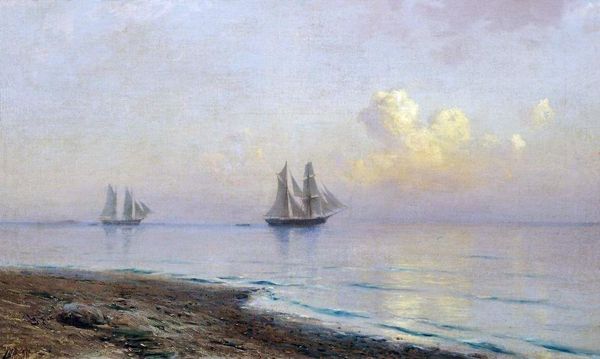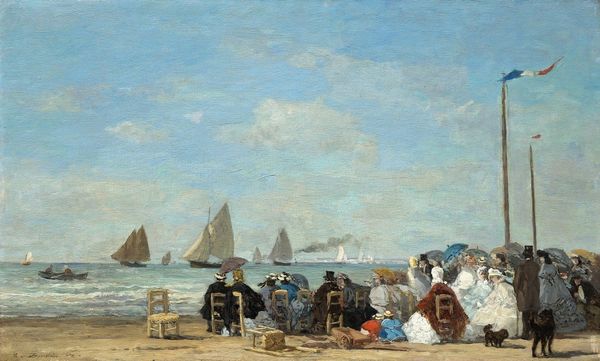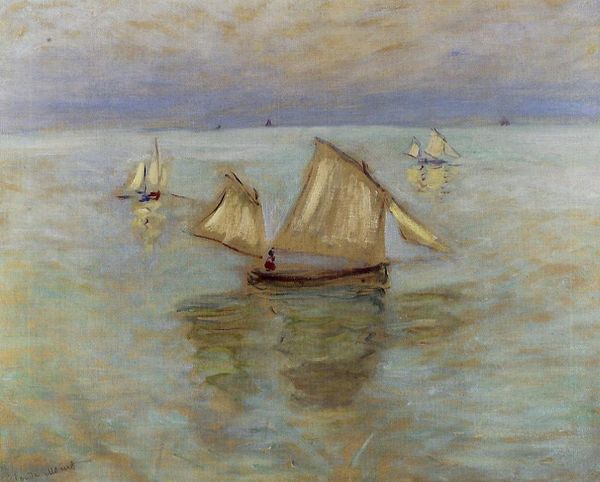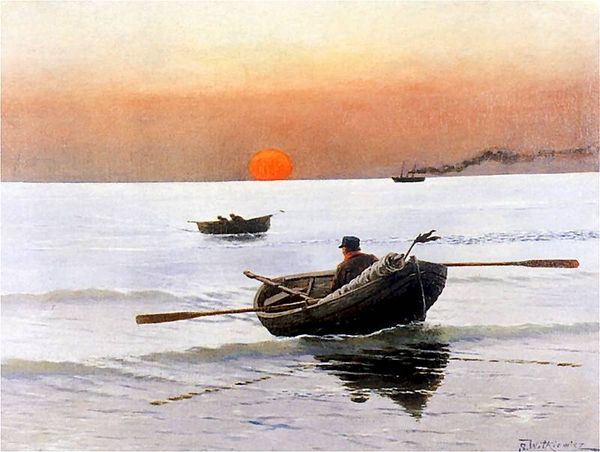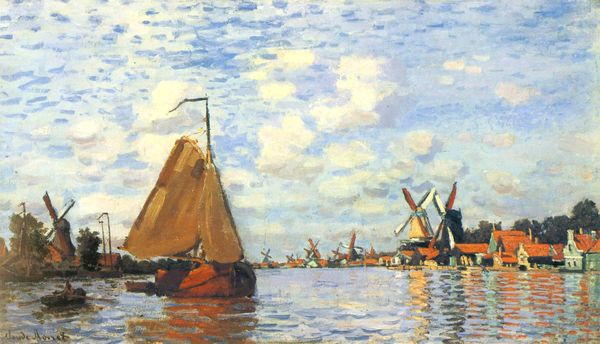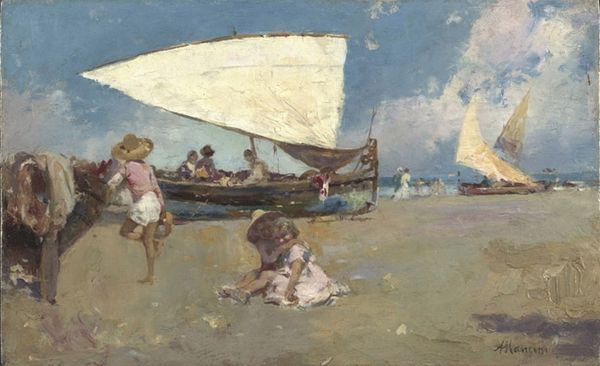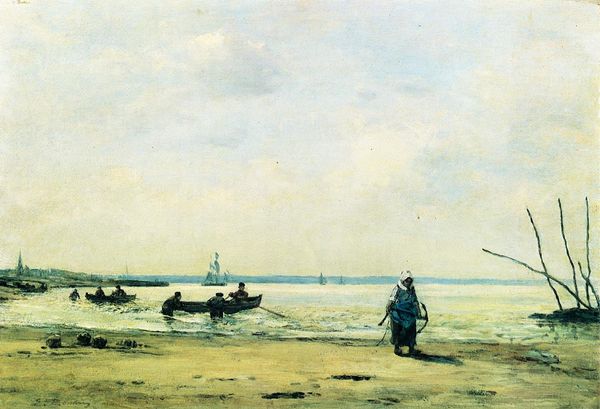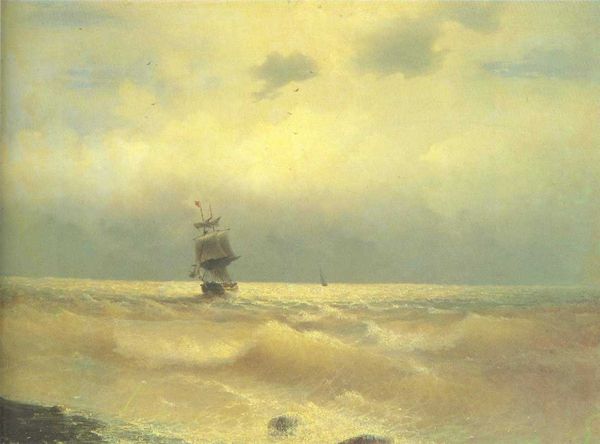
painting, plein-air, oil-paint
#
portrait
#
boat
#
painting
#
impressionism
#
plein-air
#
oil-paint
#
landscape
#
oil painting
#
water
Copyright: Public domain
Curator: This is Peder Severin Krøyer’s "Artists on the Beach," painted in 1882. Krøyer, a key figure of the Skagen Painters, here captures a scene that speaks volumes about artistic community, gender roles, and the act of observing. Editor: My first thought? It feels so… dreamy. That shimmering water, the almost hazy quality, and the focused figure creating something in the foreground, makes you feel like you are there on that hazy beach too! Curator: Absolutely. Krøyer and his fellow Skagen artists, many of whom were women, centered their lives in the Skagen artistic community of Denmark. Often they were searching for ways to reflect their specific social and political reality in the sweeping aesthetics of plein-air painting. In some ways it reflects back on the relationship between art and emancipation movements of the time. Editor: Hmm, it’s interesting you point that out, because that woman has her back to us; the way she's situated kind of isolates her, yet we know she is actually very involved within a group. And then the boat, that feels like something out of reach! A symbol of freedom perhaps, that seems very carefully arranged, yet effortless. Curator: It is tempting to interpret her position in terms of gender and agency. While Impressionism sought to democratize the subjects of painting, we must consider the inherent power dynamics embedded in artistic representation, especially concerning the portrayal of women. There's something inherently rebellious in her quiet act of creation, especially when one is always forced into positions of compromise in relation to broader patriarchal and elitist constructs in the art world. Editor: Well said! I suppose one can draw an interesting parallel between how Krøyer painted it with rapid strokes capturing an instant—which at the time also had rebellious undertones in terms of art canon— and the social status that this painter enjoys, it shows us how many opportunities existed (and did not!) at that specific point. Anyway, I like how the cool tones in the water meet the warmer shades on the beach and... how there are, in fact, quite few people there but each feels quite involved with each other at some level. It kind of evokes that tension that art is individual as well as collective! Curator: Yes, the artist and the collective. In Krøyer’s work, we encounter not just a visual rendering of a landscape, but also a window into the complex relationship between art, artist, and the social environment they inhabit, urging us to question who has the privilege of creating and being seen. Editor: It also proves, again, how seeing something that's not quite literal makes everything just... spark a little more in our minds, in the best possible way, if you know what I mean.
Comments
No comments
Be the first to comment and join the conversation on the ultimate creative platform.

